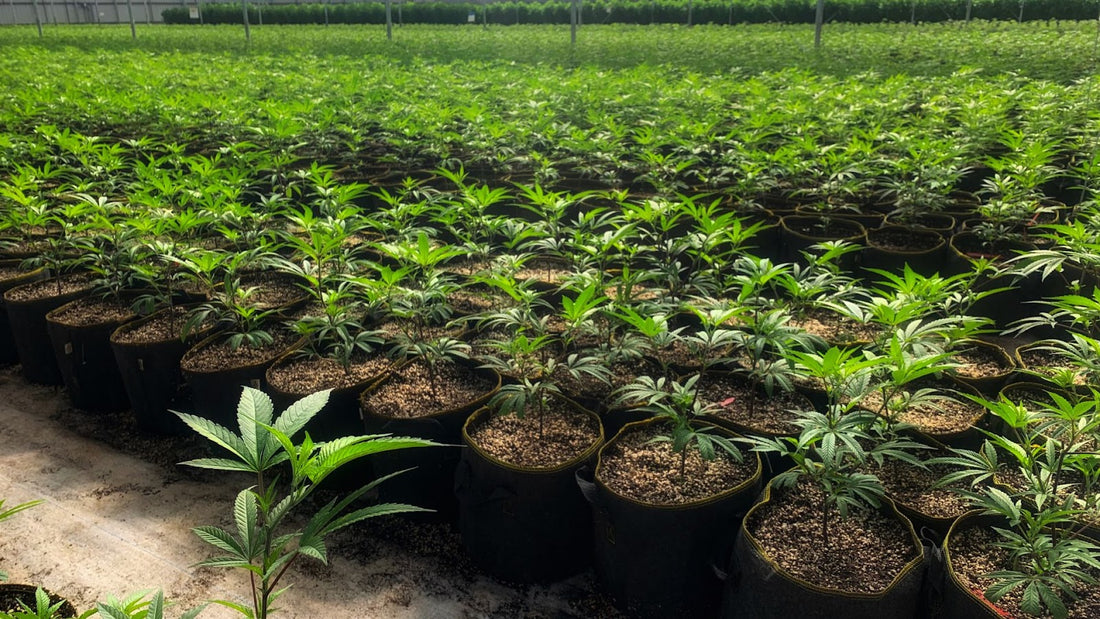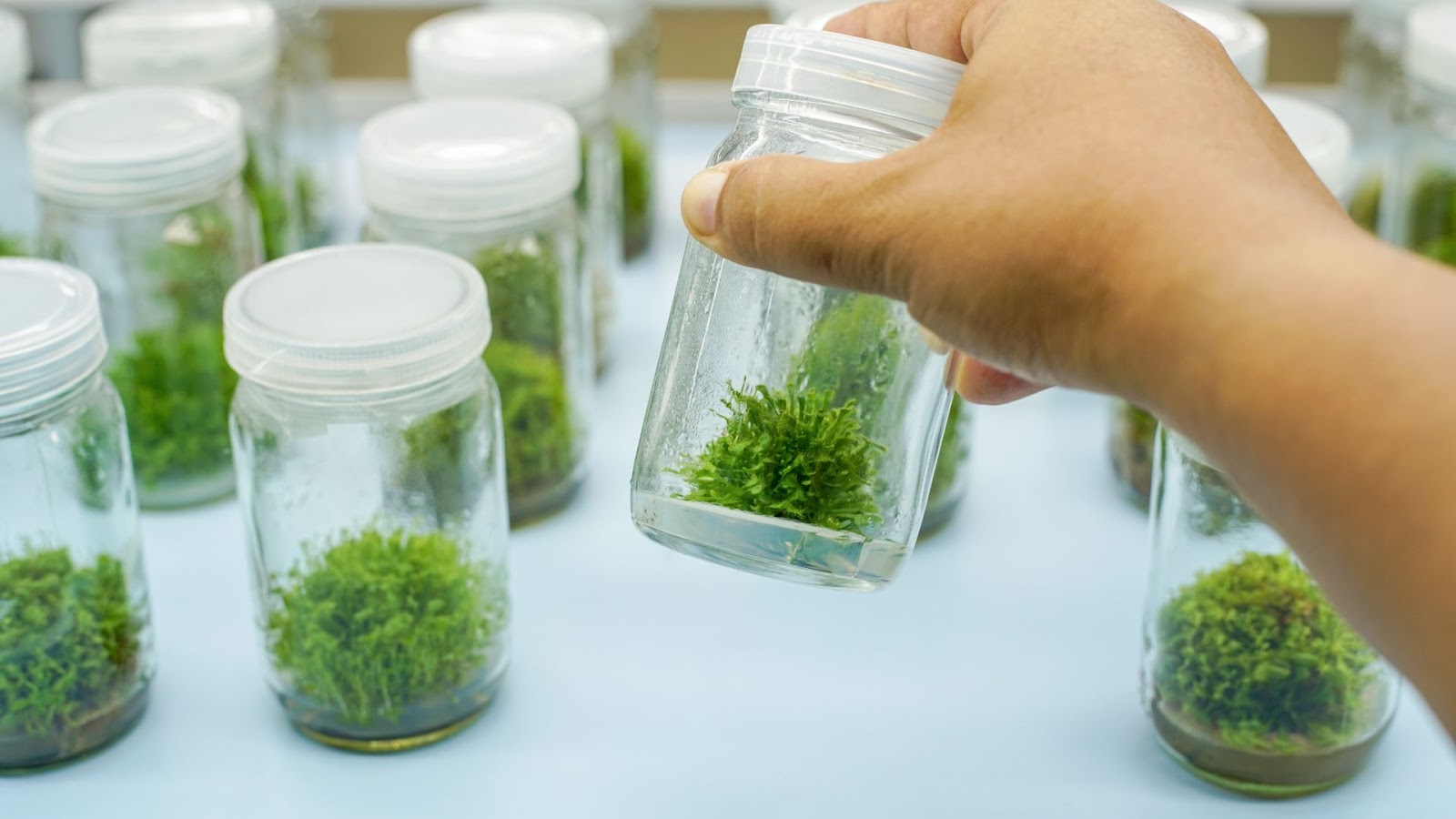
Tissue Culture Vs Traditional Cloning: The Future of Growing Cannabis
As a content and community manager, I leverage my expertise in plant biotechnology, passion for tissue culture, and writing skills to create compelling articles, simplifying intricate scientific concepts, and address your inquiries. As a dedicated science communicator, I strive to spark curiosity and foster a love for science in my audience.


Overview
In recent years, the Cannabis industry has grown dramatically in the view of expanding the legalization of medicinal and recreational Cannabis. According to a report published by Statista, global sales of Cannabis can climb up to $33.6 billion by 2025 from $13.4 billion in 2020.
Why the such expansion?
The main reason behind the blooming Cannabis industry is the application of the plant in diverse disease treatments and industrial and recreational uses. The ease of restrictions around plants has cleared the path for more research and innovations in the coming decade.
This can not only take us deep into the science of Cannabis but broaden our understanding of the growth and development of plants, their physiology, medical properties, and biochemistry.
How can this help us?
The studies can allow the Cannabis industry to bloom and thrive more than ever. They improve our understanding of boosting the large-scale production of the plant under legal policies and develop technologies for better genetic preservation and plant breeding.

Currently, there are two ways widely known and being practiced in the Cannabis industry for the propagation of plants: The conventional cloning method and the tissue culture technique.
Both these techniques offer different advantages and are used for different goals. However, there are many areas where tissue culture tops the conventional approaches.
What are they and how these techniques are applied by the Cannabis growers? What outlines the future of the Cannabis industry?
Find out all about these mind-boggling questions—and definitely more— in this article!
Traditional Technique for Growing Cannabis
Like many other plants, Cannabis can also be grown using vegetative propagation techniques. Here, the stem cutting is collected and propagated for the full growth of the plant. The method is also known as cloning since the derived plants possess the same DNA as the mother plant (don’t confuse it with genetic cloning techniques used in labs to clone organisms).

Earlier, growing seedless Cannabis plants have been practiced by people to obtain only female plants—being the major source of secondary compounds (or cannabinoids) of use. They used to remove all the male plants from the field, leaving female ones, unfertilized, and ready for pollination.
The technique gained more popularity after the introduction of “cuttings propagation or cloning”. Further, the selective breeding allowed cultivators to produce “all-female” Cannabis seeds, producing 95 %+ female plants.
How Is Traditional Cloning Done?
The stem or lateral branch of the Cannabis plant can generate roots and develop into a whole plant. However, during the process, the generation of roots alone can take up to 5-21 days.
Thus, some other techniques like water cloning or growing clones in peat pellets were introduced by growers for faster root growth. In the water cloning technique, the plant cutting is placed into a bowl containing water and allowed to root. In the peat pellets technique, the cuttings are placed into peat pellets or rock wool to root.
Steps of growing Cannabis Cuttings:
- Cut 20 cm of the main stem or lateral branch in a non-vertical fashion and remove ⅔ part of the leaves.
- Ensure the cut ends of the stem are in touch with the rooting hormones. This promotes root development and inhibits fungal infections.
- Prepare an initial medium by using appropriate substances, such as compost, perlite, peat moss, soil, oasis foam, rock wool, or their mixtures. Ensure a correct environment is present for the plant, such as moist soil and high humidity.
- After the root is developed, transfer the cutting to the final medium. At this stage, high humidity is not required.
Advantages and Disadvantages of Conventional Cannabis Propagation
Advantages
- Compared to seeds, cuttings grow at a faster rate.
- The chances of producing female plants are more as the cutting is taken from the female mother plant.
- Compared to growing from seeds, producing cannabis through cutting is far more cost-effective.
- Cuttings do not have a length germination or seedlings stage. Thus, they take a shorter time to harvest.
- Every clone maintains the same characteristics and features as the mother plant.

Disadvantages
- The fresh clones are always vulnerable to environmental stresses.
- The technique is not suitable to produce disease-free plants.
- Producing plants at a large scale is a labor-intensive approach.
- The technique offers lower quality and yield.
- Requirement of pollinators.
- The extra step of removing male plants.
Tissue Culture of Cannabis
Tissue culture or micropropagation is an alternative technique to grow Cannabis. It addresses many different challenges that occur in the conventional approach to growing the plant.
Here, plants are grown at a large scale in a small space using a few tissues in a highly controlled aseptic environment. Though the technique was first adopted from Orchid farming, the tissue culture technique is now quite popular among growers, culturists, and plant industrialists to grow and obtain a variety of disease-free plants on a large scale.

A variety of tissue culture techniques are available to cultivators to choose from to propagate their plants based on specific purposes. For example, meristem culture is used to produce virus-free clones of mother plants. Thus, it’s an extensively used technique by growers—you can call it a go-to technique.
How Is Tissue Culture Done?
The process of tissue culture has five stages:
- Stage 0: It involves the selection and maintenance of the parent plant materials.
- Stage I: This is the initiation stage, where a small piece of tissue is cut out from the mother plant, surface sterilized, and placed in a suitable media-containing jar under completely sterile conditions.
- Stage II: It’s known as the Multiplication stage. At this stage, the established cultures are transferred to a hormone-containing media for shoot generation.
- Stage III: The stage is known as the rooting stage. Here, the regenerated hoot with leaves is transferred in a medium containing rooting hormones.
- Stage IV: This is known as the Acclimation stage. When the plantlets are regenerated for about 5-6 inches in the in vitro conditions, they are required to be transferred to the outside environment. However, the process is not directly carried out.
- The plantlets are first taken out from the rooting media, the roots are rinsed to remove any stock media, then, the plantlets are transferred to a peat perlite mixture for their acclimation in the greenhouse.

Advantages and Disadvantages of Cannabis Tissue Culture
Advantages
- Mother plants can be maintained more efficiently through tissue culture in lesser space. The advantage of this is especially appealing to producers who want to maintain a large genetic library but do not want to devote the necessary floor space.
- It is also possible to maintain day-neutral genotypes and preserve genetic information through tissue culture techniques.
- As a way to reduce biotic pressures, tissue culture can successfully produce propagules that are insect-, pathogen-, and virus-free.
- The technique allows the growers to produce a clean stock of other plants. Some take it as a business. They only use tissue culture to generate and maintain healthy mother stock and supply it to those who require it.
- No need for big stem cuttings or seeds or pollinators to grow the plants. Just a few tissues are enough o carry out the process.
- No leg work of removing the male plants. Because the plants produced through tissue culture are 100% female.
- Tissue culture also enables culturists to produce plants with their desired characteristics.

Disadvantages
- Tissue culture is a bit expensive procedure, pertaining to the tools, equipment, chemicals, and space it requires.
- Tissue culturing needs practice and expertise, especially when you need to perform it on a large scale.
- Contamination is the major issue in tissue culture, which require one to maintain strict sterile conditions.
Cannabis Tissue Culture Masterclass: Take Your Cannabis Business To A New Height
Every technique has its pros and cons. However, the best that works is the one that can be carried with no friction with our cash in hands and facility and helps us achieve our desired goals.
Looking at the advantages offered by tissue cultures and the rising interest of growers and Cannabis business owners worldwide, people speculate tissue culture is the future of Cannabis propagation and business.
So, if you are ready to take your Cannabis business to next level and want to try your hands on tissue culture, come join us at the “ Cannabis Tissue Culture Master Class” to learn all about the process and more.
Even if you already have an established Cannabis tissue culture business, this Master Class will be proved to be an event for you to network and connect with other growers like you and seize new deals with them.
Whatever the reason! If you are in the Cannabis industry, you won’t regret joining the event.

Not at much expense, the Master Class give you access to everything related to Cannabis tissue culture, ranging from protocols, sterilization process, gender screening, long-term preservation techniques, and much more.
Not to forget, you are learning all this directly from the Cannabis tissue culture expert, David Critzer, and the PCT instructors themselves.
For your convenience, we have divided this into three stages:
- Basic
- Advanced
- Expert Bundle (Containing both Basic and Advanced)
Choose what best suits you and your business.
The booking of the tickets has already been started. And, because of the availability of LIMITED SEATS, we suggest you book your tickets today and lock your seats at the table of all Cannabis growers and businessmen worldwide.
See You at the Master class!
Happy Tissue Culturing!
Blog Categories
View by Level
Popular Blogs

How Bioreactors Cut Tissue Culture Labor by Half
Introduction Have you ever stopped to calculate the true human and resource cost of every single plantlet leaving your tissue...
Read More
When is Somaclonal Variation a Tool, Not a Flaw?
Introduction Somaclonal variation (SV) is a concept that sits at the very heart of modern plant biotechnology. It is formally...
Read MoreSubscribe to Our Newsletter







Join the conversation
Your email address will not be published. Required fields are marked